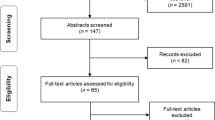Abstract
Sports leagues in different parts of the world are set up in different ways, some as open leagues and some as closed leagues. It has been shown that spending on players is higher in open leagues (Szymanski and Ross 2000; Szymanski and Valletti Rivista di Politica Economica 95:3–39, 2005). This paper extends these studies, finding that sports leagues that practice promotion and relegation will have unambiguously higher aggregate spending on player talent than closed leagues. This will lower profits in the open league, but increase fan welfare.






Similar content being viewed by others
Notes
The quality of facilities can be another, although less significant, factor.
Although data on wage rates is rare, the Annual Review of Football Finance 2009 (Deloitte 2009) provides some anecdotal evidence into wages in English Football. During the 2007/08 season wages on players in the English Premier League increased by £342 million, while that same season the Champion’s League saw an increase of £32 million. The total spending of the English Premier League was £1.2 billion, whereas the total spending in the Champion’s League spending was £291 million. Although this is not 1,027%, the wages in the Champion’s League have been increasing faster than their revenues; “The increase in wages over the last two seasons has been over three times greater than the increase in revenue…” (Deloitte 2009) This leads us to believe this wage rate, for the Champions League, is not sustainable. The Premier League’s increase in player wages has been at the same rate as their revenue increases.
This does not change the expected cost of being relegated, it only changes the expected probability of being relegated. Increasing k increases the probability of relegation, thus the probability of lower expected profits. Teams will increase spending to increase their odds of staying in the higher tiered league.
References
Coates D, Humphreys BR (2003) The effect of professional sports on earnings and employment in the services and retail sectors in US cities. Reg Sci Urban Econ 33:175–198
Deloitte (2009) Annual review of football finances. Highlights: http://www.deloitte.com/assets/Dcom-UnitedKingdom/Local%20Assets/Documents/Industries/UK_SBG_ARFF2009_Highlights.pdf
Jasina J, Rotthoff KW (2008) The impact of a professional sports franchise on county employment and wages. International Journal of Sport Finance 3(4):210–227
Murphy KM, Topel RH (2009) The economics of NFL team ownership. CHICAGO PARTNERS http://nflplayers.com/images/fck/FINAL%20-%20The%20Economics%20of%20NFL%20Team%20Ownership.pdf
Noll RG (2002) The economics of promotion and relegation in sports leagues. J Sports Econ 2(2):169–203
Noll RG, Zimbalist A (eds) (1997) Sports, jobs & taxes: the impact of sports teams and stadiums. Brookings Institute, Washington, DC
Paul RJ, Weinbach AP (2007) The uncertainty of outcome and scoring effects of Nielsen ratings for Monday night football. J Econ Bus 59:119–211
Quirk J, Fort R (1992) Pay dirt: the business of professional team sports. Princeton University Press, Princeton
Quirk J, Fort R (1999) Hard ball: the abuse of power in pro team sports. Princeton University Press, Princeton
Szymanski S, Ross R (2000) Open competition in league sports. University of Illinois Law & Economics Research Paper No. 00-07, Available at SSRN: http://ssrn.com/abstract=243756
Szymanski S, Valletti T (2005) Promotion and relegation in sporting contests. Rivista di Politica Economica 95:3–39
Taylor B, Trogdon J (2002) Losing to win: tournament incentives in the national basketball association. J Labor Econ 20(1):23–41
Acknowledgements
We would like to thank Skip Sauer, Mike Maloney, Curtis Simon, and Hillary Morgan for helpful comments. Any mistakes are ours.
Author information
Authors and Affiliations
Corresponding author
Rights and permissions
About this article
Cite this article
Jasina, J., Rotthoff, K. A model of promotion and relegation in league sports. J Econ Finan 36, 303–318 (2012). https://doi.org/10.1007/s12197-009-9120-4
Published:
Issue Date:
DOI: https://doi.org/10.1007/s12197-009-9120-4




